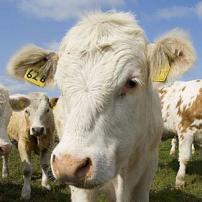Nutrient synchrony affects nutrient use in calves

Nutrient synchrony (or the distribution of nutrients within a day) affects protein, glucose and fat metabolism and can ultimately impact on the utilization of nutrients in preruminant calves, concludes PhD student Joost van den Borne at Wageningen University in the Netherlands.
distribution of nutrient intake (carbohydrate, fat and protein) on metabolic
processes in preruminant calves. Calves were fed milk replacer diets. Protein
and fat deposition was measured in climate respiration chambers and oxidation of
individual nutrients was measured using stable isotopes.
Increase in feeding frequency
Increasing the feeding
frequency resulted, at identical daily nutrient intakes, in an increase in
protein and fat deposition. Dietary carbohydrates were, regardless of the
feeding frequency and level, virtually completely oxidized and consequently not
used for fatty acid synthesis in preruminant calves. Glucose excretion in urine
decreased with increasing feeding frequency.
Protein and fat
deposition
Separating the supply of protein
and carbohydrates within a day decreased protein deposition in pigs, but not in
preruminant calves.
Fat deposition, however, increased when the protein and
carbohydrate were further separated in calves. Also the intramuscular fat
content increased with increasing separation of these nutrients. An increase in
lactose intake in a single meal resulted in an increase in plasma glucose
concentrations, but simultaneously in a decrease in plasma insulin
concentrations.











